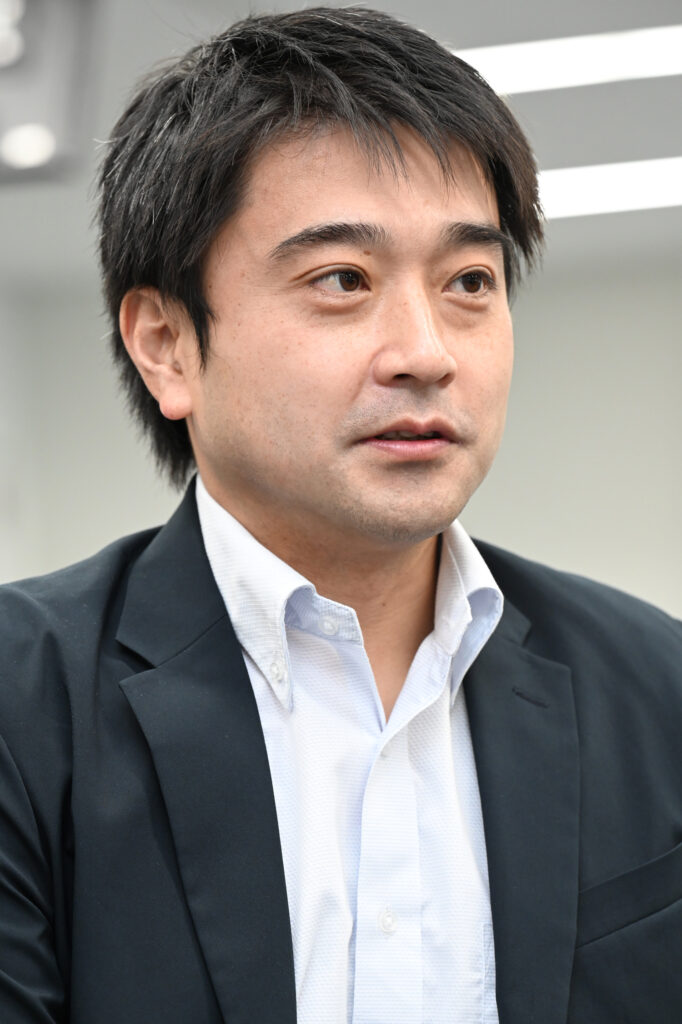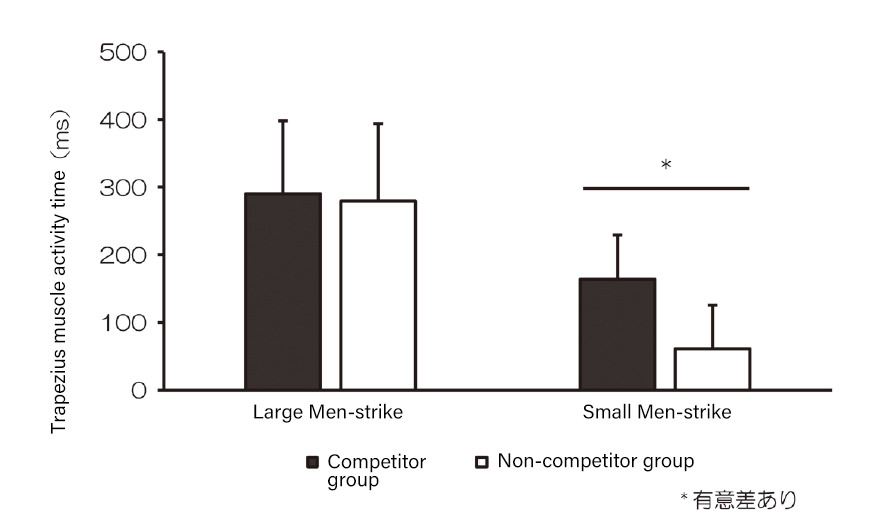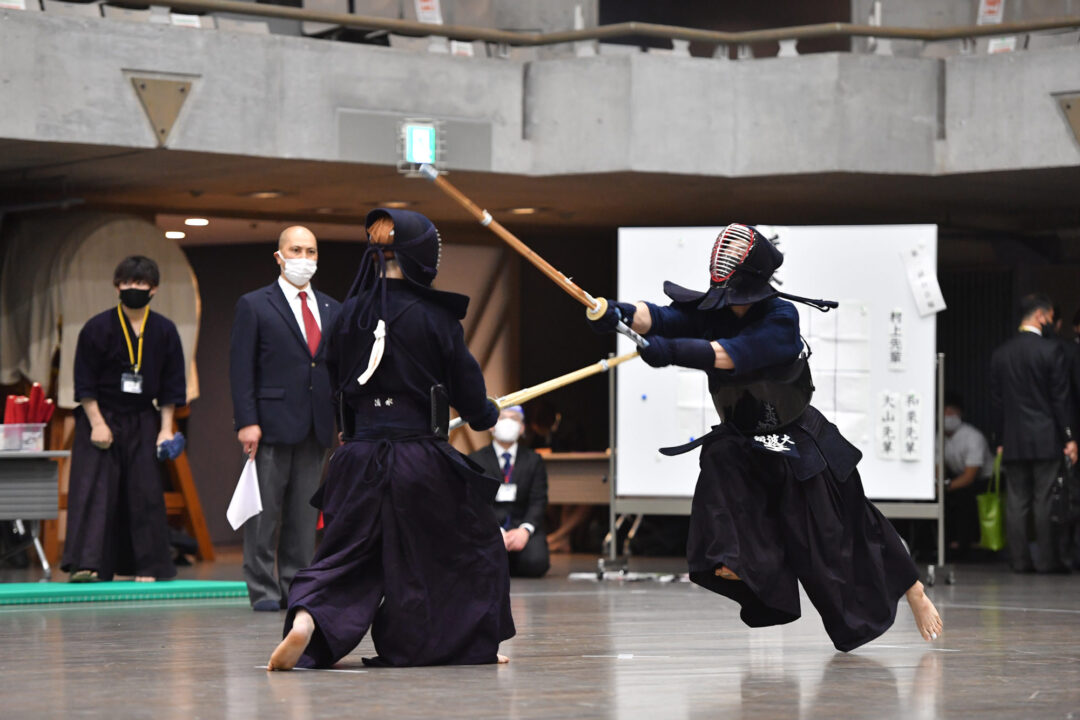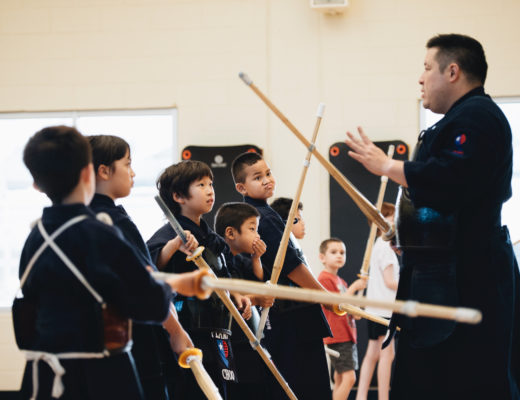2021.8 KENDOJIDAI
Translation: Jouke van der Woude
To improve the quality of strikes, it is important to increase the flexibility of the shoulder blade and hip joint area. Here are some stretches and training exercises that can be done alone.
Kon Michihiro (Professor, Department of Health and Sports, Faculty of Life Design, Toyo University)

In this special issue, I would like to introduce effective training methods to increase the range of motion of the shoulder blades and hip joints. Keeping the shoulder blades and hip joints in good condition with a wide range of motion is important from the perspective of improving Kendo performance and preventing injury.
In a previous study, the muscular activities around the scapula were reported in relation to Kendo movements (Figure 1). Prof. Koda and his research team at the University of Tsukuba studied the activity of the left trapezius muscle during the swinging motion of Men-strikes (large Men-strikes and small Men-strikes) using male students who have belonged to representative teams (those who have competed in the top 8 or higher in inter-high school and intercollegiate Kendo). The study divides male students in university athletic Kendo clubs into two groups: regular (those who have competed in the top eight or higher in inter-high school and intercollegiate competition) and non-regular (those who have never competed in inter-high school and intercollegiate competition). The trapezius muscle is a large muscle that covers the shoulder blades from the neck to the back and is active when lifting objects.
Figure 1 shows a graph comparing the activity time of the trapezius muscle during a Men- swinging motion between the regular and non-regular groups. You can see that the trapezius is very active in both groups during the swing-up motion of a large Men- strike. In other words, the activity of the trapezius muscle is important and inevitable when performing a large Men-strike (Figure 1).

On the other hand, during the upswing movement of small Men-strikes, the trapezius muscle was active longer in the regular group than in the non-regular group, and the difference was statistically significant. This result suggests that it may be important to activate the trapezius muscle and swing up the upper arm while using the shoulder blades even during small Men-strikes used in competitive scenarios such as Shiai and exams (Figure 1). Thus, since the shoulder blades are always used during the swinging motion of the Shinai, it seems important to increase the flexibility of the muscles around the scapula, including the trapezius muscle.
The hip joint is one of the largest joints in the body, connecting the torso to the legs, and is indispensable for performing various movements smoothly, including basic movements such as standing, sitting, and walking. Therefore, a narrow range of motion of the hip joint can affect every movement and lead to poor performance. Narrow hip joint range of motion not only reduces performance, but also increases the risk of injury due to the inability to withstand the loads associated with sudden changes in movement. Furthermore, the asymmetrical nature of Kendo movements places a great deal of stress on the muscles surrounding the hip joints. Therefore, increasing the flexibility of the muscles around the hip joints and expanding the range of motion of the hip joints will not only improve Kendo performance, but will also help prevent back pain and other disorders. Stretching is still an effective training method for increasing muscle flexibility and joint range of motion. In this special issue, we would like to introduce basic static and dynamic stretching to increase the range of motion of the shoulder blades and hip joints. In particular, since many middle-aged and older Kenshi are likely to have stiff bodies, we would like to focus on stretching that even stiff people can work on.
During the small Men upswing movement, the competitor’s group had longer trapezius muscle activity than the non-competitor group with a statistically significant difference
Static stretching around the shoulder blades
The rest of this article is only available for Kendo Jidai International subscribers!





